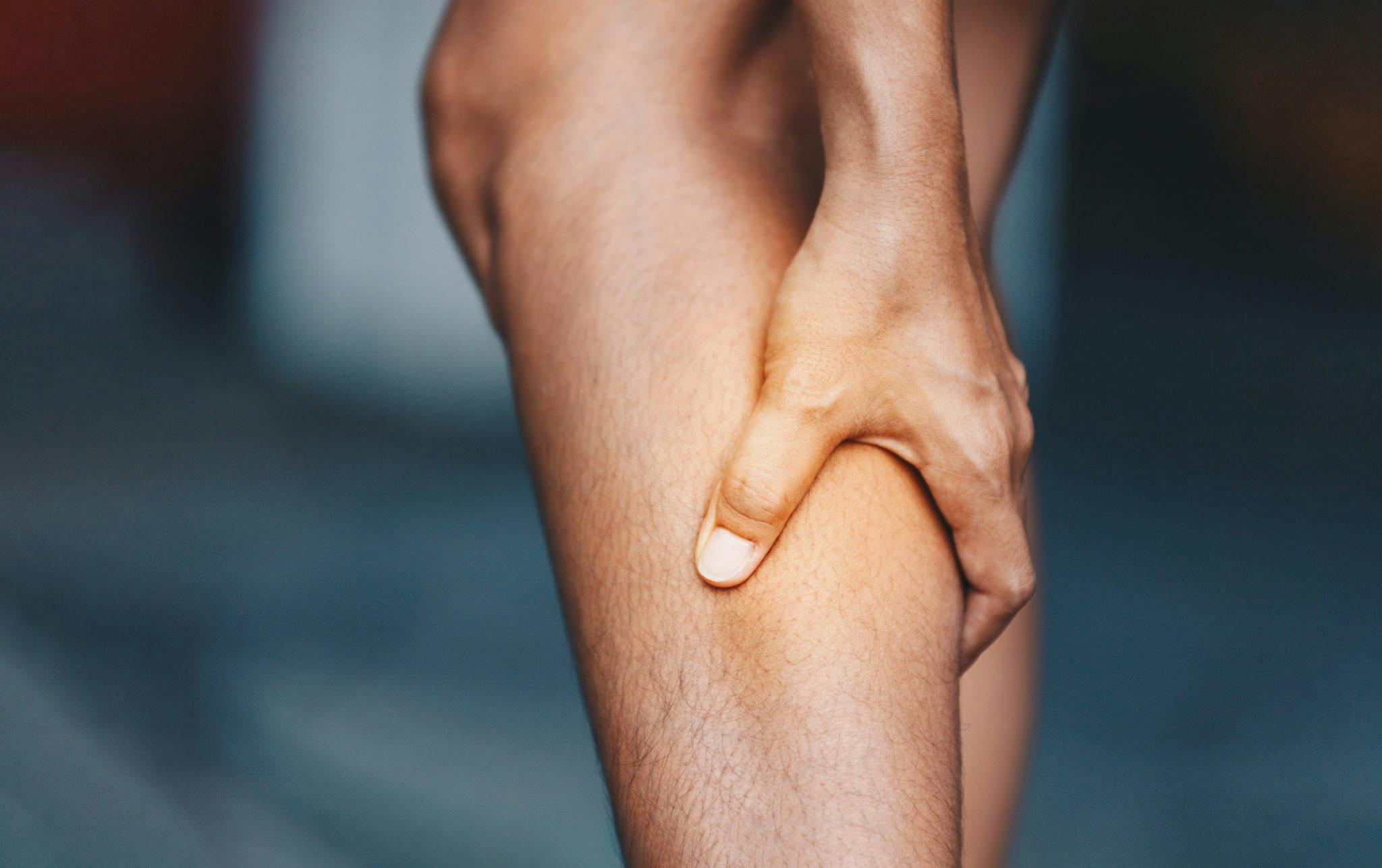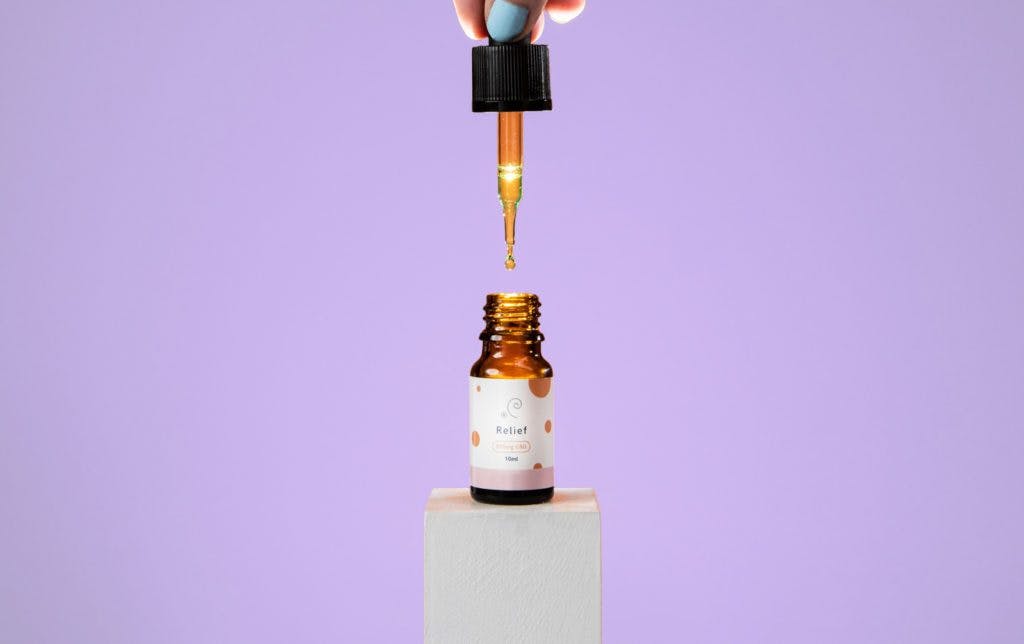Can CBD Help Stop Leg Cramps?

Article written by

Shanti RyleContent Writer
Content reviewed by

Dr. Lewis JasseyMedical Director - Pediatric Medicine
It’s never a pleasant feeling, waking up in the middle of the night to the sharp, sudden tightness of a leg cramp. While cramp may, on the surface, be a minor medical issue, the pain can occur randomly and last for hours, compromising one’s ability to stand or relax.
CBD has been touted as a potential remedy to stop leg cramps, but what does the research say about its usefulness?
While explicit clinical evidence studying leg cramps is lacking, CBD has proven itself a valuable anti-inflammatory. CBD products can indirectly help relieve pain associated with leg cramps and muscle spasms by diminishing the sensation of pain rather than soothing the muscle’s tension. And unlike other muscle relaxants and painkillers, CBD is a natural remedy with virtually zero adverse effects on the body.
Get your medical marijuana card
Connect with a licensed physician online in minutes.
What Causes Leg Cramps?
Leg cramps, also known as muscle fits or spasms, are a sudden, uncontrollable contraction of the muscles in the leg. They predominantly affect the calf muscles, though leg cramps also occur in the thighs and hamstrings.
While sometimes leg cramps happen for no apparent reason (called idiopathic leg cramps), other probable causes of muscle cramps include:
- Long hours of muscle stillness
- Too much muscle strain
- Inadequate stretching before physical exertion
- Overheating
- Dehydration
In rare conditions, muscle cramps could be a potential symptom of more severe concerns, such as liver disease or a reaction to a medication. If the cramps continue for longer than 10 minutes despite attempts to unclench the muscle, or they occur after encountering a toxic substance, it’s worth seeking medical attention.
How CBD Helps Relieve Leg Cramps
CBD interacts with the body via the endocannabinoid system (ECS), which substantially regulates how we experience pain. CB1 and CB2 are spread throughout the brain and body, and the body’s natural endocannabinoids interact with these receptors to maintain homeostasis.
When one consumes CBD oil, the CBD acts on the ECS receptors by modifying how they bind to cannabinoids. In effect, CBD enhances the capacity of the ECS to do its job. It extends the concentration of anandamide, the body’s “bliss” molecule, in the body for longer, allowing it to reduce pain sensations and soothe inflammation in the damaged muscle.
To note: CBD doesn’t bind to CB1 or CB2 receptors in the way THC does. CBD is, in scientific terms, what is known as a non-competitive negative allosteric modulator. Put, CBD dampens or blunts CB1 receptors, making them less receptive to THC and anandamide.
Download Free Guide to CBD
Dosing
CBD does not intoxicate or produce paranoia via overconsumption like THC does, and it’s virtually impossible to overdo it. You can use as much as needed to get pain relief, and there are a variety of consumption options available for those seeking to use CBD oil for leg cramps.
Vaping CBD oil via a cartridge is perhaps the fastest way to introduce it to the bloodstream via the lungs. Once inhaled, CBD circulates through the body and quickly reaches the pain sensors in the brain, helping to reduce inflammation and anxiety while relaxing the leg muscles.
Dosing CBD oil with sublingual drops is another faster-acting option to attain relief from muscle cramps. Start with a few drops placed under the tongue and swallow after five seconds.
Topicals are another popular option for fast-acting leg cramp relief. With topicals, the CBD interacts directly with the ECS in your skin to provide relief. Massaging the affected area with a CBD oil lotion or gel will quickly ease the pain and last five to six hours from application.
Does cannabidiol have different effects at different dosages? The Biphasic Effects of CBD
Yes, CBD does have different effects at different doses. CBD can have more stimulating effects in low doses (around 20 mg or under). At higher doses (around 40 mg – 50 mg +), CBD has more sedative effects.
By blunting CB1 receptors, CBD can increase the amount of anandamide available in the blood. It has a similar effect when used in combination with THC, where using low to moderate doses of CBD with higher doses of THC can both reduce the “high” of THC and elongate its effects. This is because CB1 receptors aren’t “soaking up,” processing and eventually breaking down the THC/anandamide.

Alternative Ways to Get Relief
Besides CBD, there are other options to achieve relief from leg cramps, though they may not be as fast-acting or effective.
Doctors often prescribe pain relievers or muscle relaxants to address chronic pain and cramps, though they have their share of side effects. Prescription drugs are another alternative, though there is no recommended medication to cure cramps specifically.
Stretching, foam rolling, yoga, massage, or the use of a heating pad may all be valuable tools in releasing the tension in a muscle cramp if CBD oil or painkillers aren’t nearby.
Get Your Medical Card
Connect with a licensed physician online in minutes.
Frequently Asked Questions
Is CBD oil a good muscle relaxant?
CBD oil helps to relax muscles by way of its anti-inflammatory properties. By interacting with the ECS, CBD slows the reuptake of endocannabinoids and allows the body to quickly repair tense muscles and soothe the pain associated with muscle tension.
Does CBD oil help with restless leg or leg cramps?
Yes, CBD oil can help soothe the pain and inflammation that go hand in hand with leg cramps. And while the evidence is lacking, anecdotal reports suggest that CBD also may help calm the spasms associated with restless leg syndrome.



